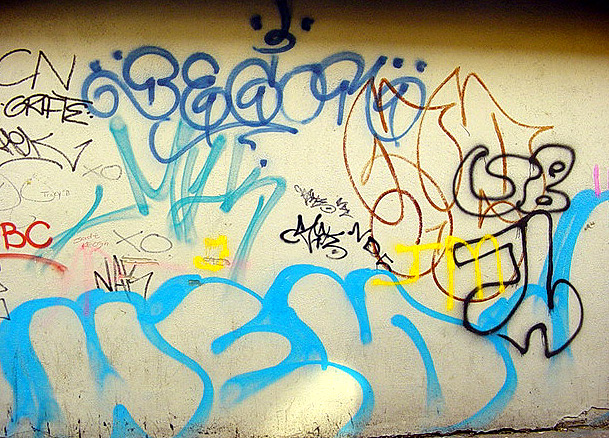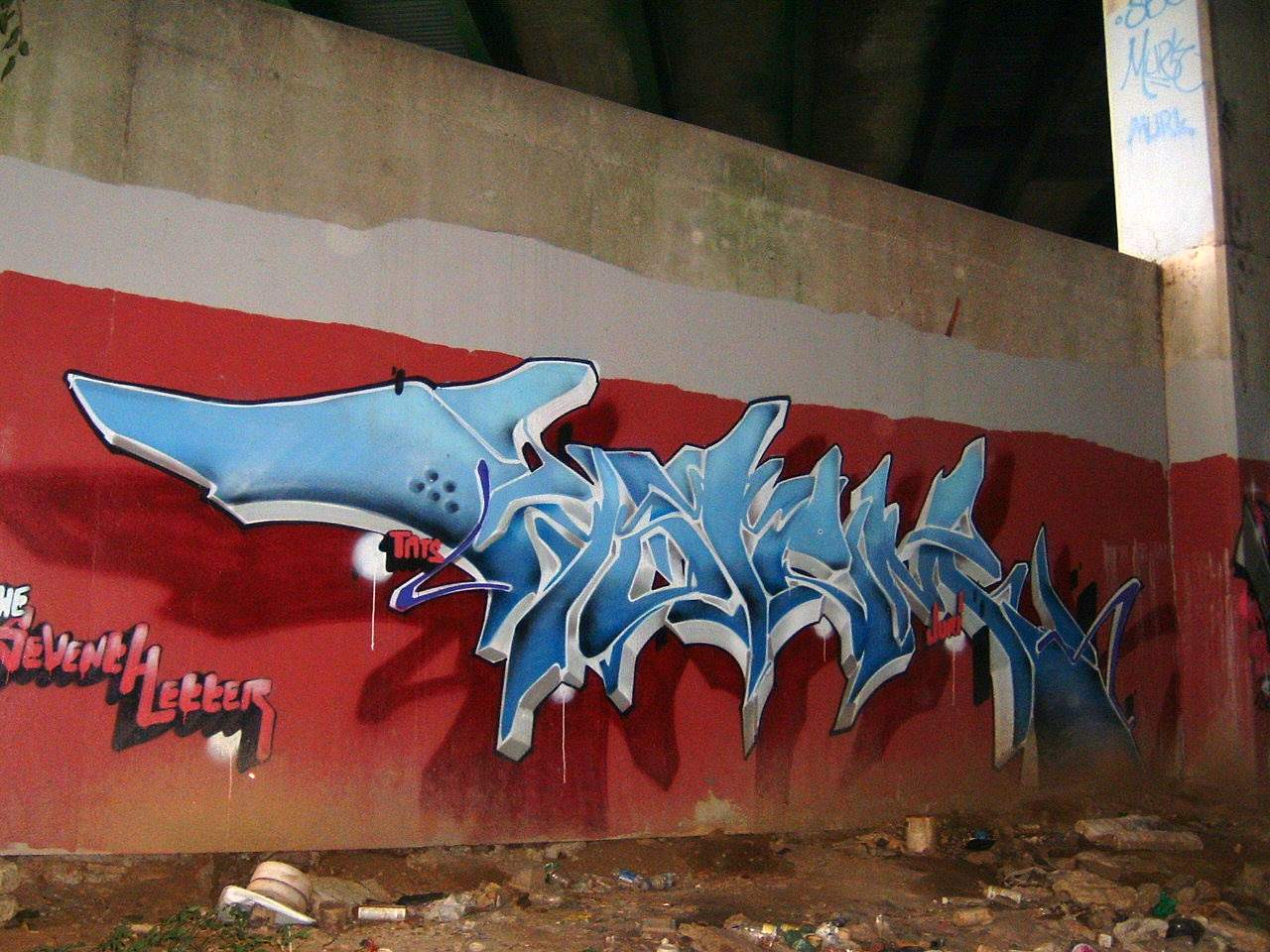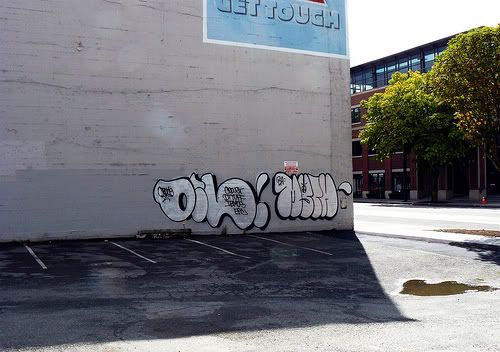IJesusChrist
Holofractale de l'hypervérité
- Inscrit
- 22/7/08
- Messages
- 7 482
The word and idea of graffiti [as we know it] arose in New York City, specifically in the inner city ghettos and projects. It began by people writing their names in permanent markers on street corners and signs, (the "first" NYC graffiti guy wrote his name on the walls in middle school). However, graffiti has been found in human history as long as we have had walls to write on. The concepts, styles, and ideologies behind each paint stroke have changed throughout the years, but the action of putting one's art, intentions, or ideas on a public wall has still remained.
When graffiti first began to get popular, again - in NYC, it was due to the subway cars and the infrastructure that housed them. Writers knew they could paint a name here and it would show there, essentially a moving platform of fame within the world of graffiti. Of course the city of saw these as direct attacks of its own property - and retaliated as such, making graffiti illegal and setting up a funding system from tax payers to remove graffiti from the streets - attempting to remove what seemed to some as "dirty", "unsafe" and "urban decay".
As years went on, more and more youths joined crews [distinguished from gangs *until the early 90's] and the popularity (or infamous status) of graffiti grew. Other cities around the US began to follow in toe, as well as around the world. It was in the 70's that the hip-hop style of graffiti in New York started to spawn, but was not until the 80's that the world began to develop its own styles and flavors.

[this will get beyond the history in a minute, but it is important to see the transition's, ideas, and history that created what graffiti is today.]
During the 80's the styles got much more complex and in my own opinion, more artistic.


And, of course, in the 80's [and earlier] we see graffiti take over the berlin wall

But one artist will take the cake, and turn graffiti into something no one else had even conceived of before, he writes as Banksy, and even to this day his identity is unknown. Perhaps the most famous of all the street artists in the world, Banksy had developed a style and ideology so great that he has sold out dozens of art shows around the world, masterminded a very odd movie [See "Exit Through the Gift Shop"], and has become an icon of Europe's counter culture:


An art show by Banksy:
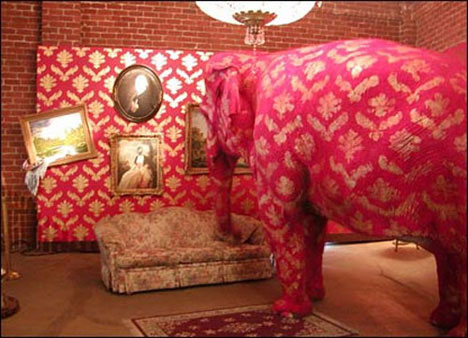
"Great things lay in plain sight, yet most of us never stop to look."
Graffiti have rise to one of my favorite artists, Daim:


It gave rise to president Obama's "Official Photograph" which is being held in the white house, alongside every other President's picture:

This picture held Obamas' supporters together, figuratively, and became the first picture in the white house to be done by a street artists (and probably the last). It was done by Shepard Fairey, the man who popularized Andre The Giant stickers, and the "Obey" logo:
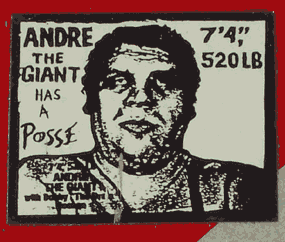

Now, let us get into the academics of this phenomenon that seems to drive a good percent of the population to write, draw, paint, and stencil on walls.
There are plenty of people who have done many studies on the effects and consequences of graffiti, and it is increasingly interesting to note that a study done in new york city in the late 90's found that neighborhoods with graffiti had a significantly lower crime rate than those with very little graffiti [gang graffiti was omitted]. And here stand the basis of the rest of my [our] argument.
Richard Florida, a geography professor, argue's in his scholarly papers that beyond the idea of economic capital - I.E. Money, cities, towns, and neighborhoods contain what is called "social" capital - i.e. an attractive culture, group, or ideology that brings in other social populations. One can easily argue that different districts in town offer up various types of social capital, but almost all have a grand amount of social capital, with the exception of very industrial places and dense office spaces. The areas with social capital tend to attract tourists, night-goers, the "hip", and bohemians. Those without social capital are usually deemed places for work only [no play].
Social capital is important for neighborhoods and towns that wish to create "safe streets" and a steady economy. My specific neighborhood plans to put in some brand new murals along a very large wall near my house. This would be an example of economic capital being spent on the arrival of social capital - something that increases the viewing pleasure of an area, as well as the imagined "social interactions" with the land scape. A mural, as you know, is an interaction with a person and his land scape...
After Richard F. began to talk about bohemians and the rise of social capital, it became apparent to others, see Bloch, Solja, that graffiti has the ability to do the same, however with a much different crowd. Unlike pretty murals that attract all types, graffiti is often looked down upon by most, yet loved by some. The belief with graffiti being dirty and a sign of urban decay comes from propaganda and stigma from years long since passed. More often than not, when a scene in a holly wood movie is suppose to depict a dirty drug deal, a dumping of a body, or something of the underworlds' crimes emphasis on graffiti in the background or foreground is placed. We grow to accept that graffiti is attributed to gangs or the people who write are often very violent.
Bloch makes an exceptional argument that graffiti is a very powerful, magnificent tool for the urban landscape. We will forever [until we die I suppose] see the expansion of urban cities and streets that very little of us every take notice of (both in their absolute purpose and their facade). These urban streets are often painted "egg-shell white" and tan, to make the most bland of objects as possible. Yet, as Bloch says, we continue to contest these boundaries, we spray our names, we write a note on the wall, continually contesting and pushing the boundaries of the cities walls and structure. We bring to the table what was once not there - a sense of interaction with the environment. We bring social capital.
This will not be easy to grasp for all of you, but please, have an open mind. Imagine the streets and highways of years long passed, completely blank, painted that beautiful creamy beige, that wonderful egg-shell white, that magnificent tan color. Imagine if that were today, that there were no images of love and angst upon the walls of what facilitates you're driving to work.
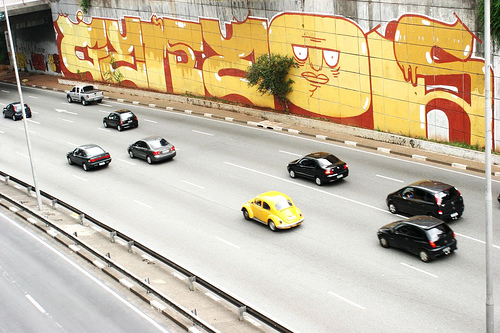
Can you not see that this is an expression of art, that this is an interaction with the landscape, that this is social capital? As an example used before, how many of us will become wealthy enough to erect our own buildings, our own structures, our own sculptures within a city? Very few - yet, with the power of color an impression can be made upon the landscape that is equal to that of a large building.
When millions of us drive to work every day (not including me) we stare at the back end of a bumper until we arrive at work. Often housed by bland walls, and repetitive colored cars, possibly the highlight of the drive is a funny billboard, which we think about on our way. The majority of those millions will see none of the graffiti, none of the art, simply passing it by as if invisible. Once prompted to look, again the majority will say nay, dirty, and decay. Foolish are they to shoo away such an inspirational interaction with the physical world. An impression that last's as long as it can until the tax payer's unknowingly cover it up.
My ideology is that color, being one of the most powerful stimuli of the senses, not that any of us psychonauts would understand that - can be used as a contestation to the city's overwhelming power and presence in our daily life. The possibility of seeing a new piece of art, much like a flower popping out of a soccer field, intrigues me. I am forever viewing and observing this art, wherever I go, whether it be a John Hancock of a fellow writer;
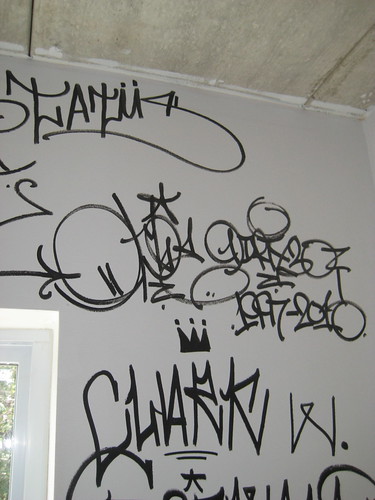
A master piece down a back alley:
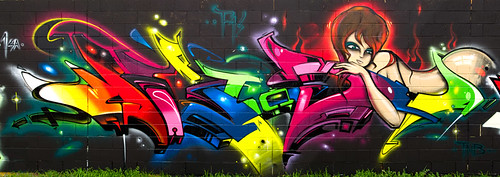
A wheat paste poster:
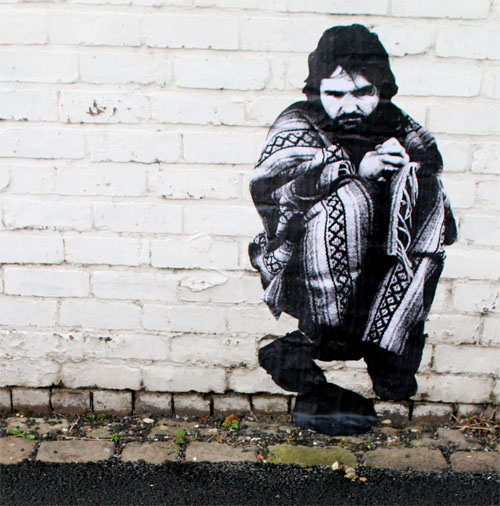
Or a quick throwie on the side of the highway:
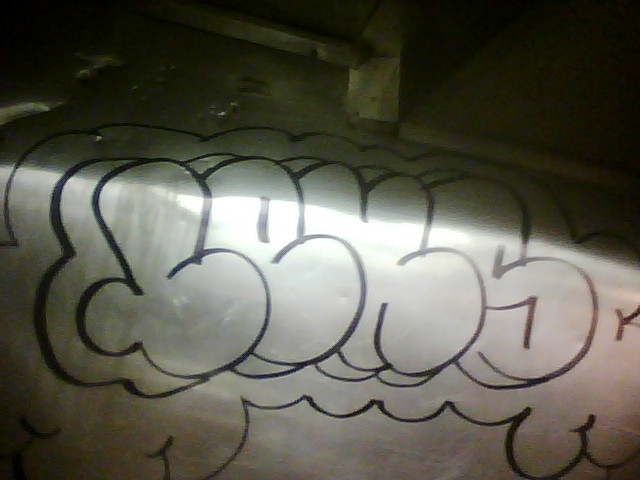
I see more than art. I see more than contestation. I see the interaction of an individual with the environment in which he is forced to live within. There is great benefit to seeing color, hence "color therapy" given to many americans during the winter months. Hence, we like seeing colorful paintings, hence, we love a field filled with flowers, the list goes on.
When you see dirty decay, that is your own fault for succumbing to the propaganda, bias, and stigma handed down from above. When you fail to see the interaction, the passion, and the art - that is on you, and I am sorry for that.
So please, clean up your act, and think twice the next time you belittle graffiti:

When graffiti first began to get popular, again - in NYC, it was due to the subway cars and the infrastructure that housed them. Writers knew they could paint a name here and it would show there, essentially a moving platform of fame within the world of graffiti. Of course the city of saw these as direct attacks of its own property - and retaliated as such, making graffiti illegal and setting up a funding system from tax payers to remove graffiti from the streets - attempting to remove what seemed to some as "dirty", "unsafe" and "urban decay".
As years went on, more and more youths joined crews [distinguished from gangs *until the early 90's] and the popularity (or infamous status) of graffiti grew. Other cities around the US began to follow in toe, as well as around the world. It was in the 70's that the hip-hop style of graffiti in New York started to spawn, but was not until the 80's that the world began to develop its own styles and flavors.

[this will get beyond the history in a minute, but it is important to see the transition's, ideas, and history that created what graffiti is today.]
During the 80's the styles got much more complex and in my own opinion, more artistic.


And, of course, in the 80's [and earlier] we see graffiti take over the berlin wall

But one artist will take the cake, and turn graffiti into something no one else had even conceived of before, he writes as Banksy, and even to this day his identity is unknown. Perhaps the most famous of all the street artists in the world, Banksy had developed a style and ideology so great that he has sold out dozens of art shows around the world, masterminded a very odd movie [See "Exit Through the Gift Shop"], and has become an icon of Europe's counter culture:


An art show by Banksy:

"Great things lay in plain sight, yet most of us never stop to look."
Graffiti have rise to one of my favorite artists, Daim:


It gave rise to president Obama's "Official Photograph" which is being held in the white house, alongside every other President's picture:

This picture held Obamas' supporters together, figuratively, and became the first picture in the white house to be done by a street artists (and probably the last). It was done by Shepard Fairey, the man who popularized Andre The Giant stickers, and the "Obey" logo:


Now, let us get into the academics of this phenomenon that seems to drive a good percent of the population to write, draw, paint, and stencil on walls.
There are plenty of people who have done many studies on the effects and consequences of graffiti, and it is increasingly interesting to note that a study done in new york city in the late 90's found that neighborhoods with graffiti had a significantly lower crime rate than those with very little graffiti [gang graffiti was omitted]. And here stand the basis of the rest of my [our] argument.
Richard Florida, a geography professor, argue's in his scholarly papers that beyond the idea of economic capital - I.E. Money, cities, towns, and neighborhoods contain what is called "social" capital - i.e. an attractive culture, group, or ideology that brings in other social populations. One can easily argue that different districts in town offer up various types of social capital, but almost all have a grand amount of social capital, with the exception of very industrial places and dense office spaces. The areas with social capital tend to attract tourists, night-goers, the "hip", and bohemians. Those without social capital are usually deemed places for work only [no play].
Social capital is important for neighborhoods and towns that wish to create "safe streets" and a steady economy. My specific neighborhood plans to put in some brand new murals along a very large wall near my house. This would be an example of economic capital being spent on the arrival of social capital - something that increases the viewing pleasure of an area, as well as the imagined "social interactions" with the land scape. A mural, as you know, is an interaction with a person and his land scape...
After Richard F. began to talk about bohemians and the rise of social capital, it became apparent to others, see Bloch, Solja, that graffiti has the ability to do the same, however with a much different crowd. Unlike pretty murals that attract all types, graffiti is often looked down upon by most, yet loved by some. The belief with graffiti being dirty and a sign of urban decay comes from propaganda and stigma from years long since passed. More often than not, when a scene in a holly wood movie is suppose to depict a dirty drug deal, a dumping of a body, or something of the underworlds' crimes emphasis on graffiti in the background or foreground is placed. We grow to accept that graffiti is attributed to gangs or the people who write are often very violent.
Bloch makes an exceptional argument that graffiti is a very powerful, magnificent tool for the urban landscape. We will forever [until we die I suppose] see the expansion of urban cities and streets that very little of us every take notice of (both in their absolute purpose and their facade). These urban streets are often painted "egg-shell white" and tan, to make the most bland of objects as possible. Yet, as Bloch says, we continue to contest these boundaries, we spray our names, we write a note on the wall, continually contesting and pushing the boundaries of the cities walls and structure. We bring to the table what was once not there - a sense of interaction with the environment. We bring social capital.
This will not be easy to grasp for all of you, but please, have an open mind. Imagine the streets and highways of years long passed, completely blank, painted that beautiful creamy beige, that wonderful egg-shell white, that magnificent tan color. Imagine if that were today, that there were no images of love and angst upon the walls of what facilitates you're driving to work.

Can you not see that this is an expression of art, that this is an interaction with the landscape, that this is social capital? As an example used before, how many of us will become wealthy enough to erect our own buildings, our own structures, our own sculptures within a city? Very few - yet, with the power of color an impression can be made upon the landscape that is equal to that of a large building.
When millions of us drive to work every day (not including me) we stare at the back end of a bumper until we arrive at work. Often housed by bland walls, and repetitive colored cars, possibly the highlight of the drive is a funny billboard, which we think about on our way. The majority of those millions will see none of the graffiti, none of the art, simply passing it by as if invisible. Once prompted to look, again the majority will say nay, dirty, and decay. Foolish are they to shoo away such an inspirational interaction with the physical world. An impression that last's as long as it can until the tax payer's unknowingly cover it up.
My ideology is that color, being one of the most powerful stimuli of the senses, not that any of us psychonauts would understand that - can be used as a contestation to the city's overwhelming power and presence in our daily life. The possibility of seeing a new piece of art, much like a flower popping out of a soccer field, intrigues me. I am forever viewing and observing this art, wherever I go, whether it be a John Hancock of a fellow writer;

A master piece down a back alley:

A wheat paste poster:

Or a quick throwie on the side of the highway:

I see more than art. I see more than contestation. I see the interaction of an individual with the environment in which he is forced to live within. There is great benefit to seeing color, hence "color therapy" given to many americans during the winter months. Hence, we like seeing colorful paintings, hence, we love a field filled with flowers, the list goes on.
When you see dirty decay, that is your own fault for succumbing to the propaganda, bias, and stigma handed down from above. When you fail to see the interaction, the passion, and the art - that is on you, and I am sorry for that.
So please, clean up your act, and think twice the next time you belittle graffiti:








